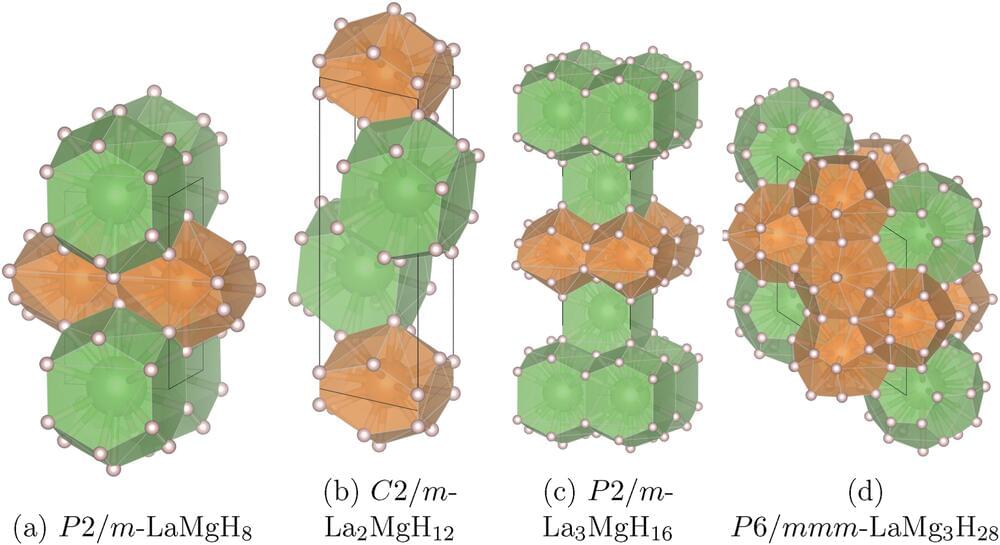
Skoltech researchers and their colleagues from MIPT and China’s Center for High Pressure Science and Technology Advanced Research have computationally explored the stability of the bizarre compounds of hydrogen, lanthanum, and magnesium that exist at very high pressures. In addition to matching the various three-element combinations to the conditions at which they are stable, the team discovered five completely new compounds of hydrogen and either magnesium or lanthanum only.
Published in Materials Today Physics, the study is part of the ongoing search for room-temperature superconductors, the discovery of which would have enormous consequences for power engineering, transportation, computers and more.
“In the previously unexplored system of hydrogen, lanthanum, and magnesium, we find LaMg3H28 to be the ‘warmest’ superconductor. It loses electrical resistance below −109°C, at about 2 million atmospheres—not a record, but not bad at all either,” the study’s principal investigator, Professor Artem R. Oganov of Skoltech, commented.









